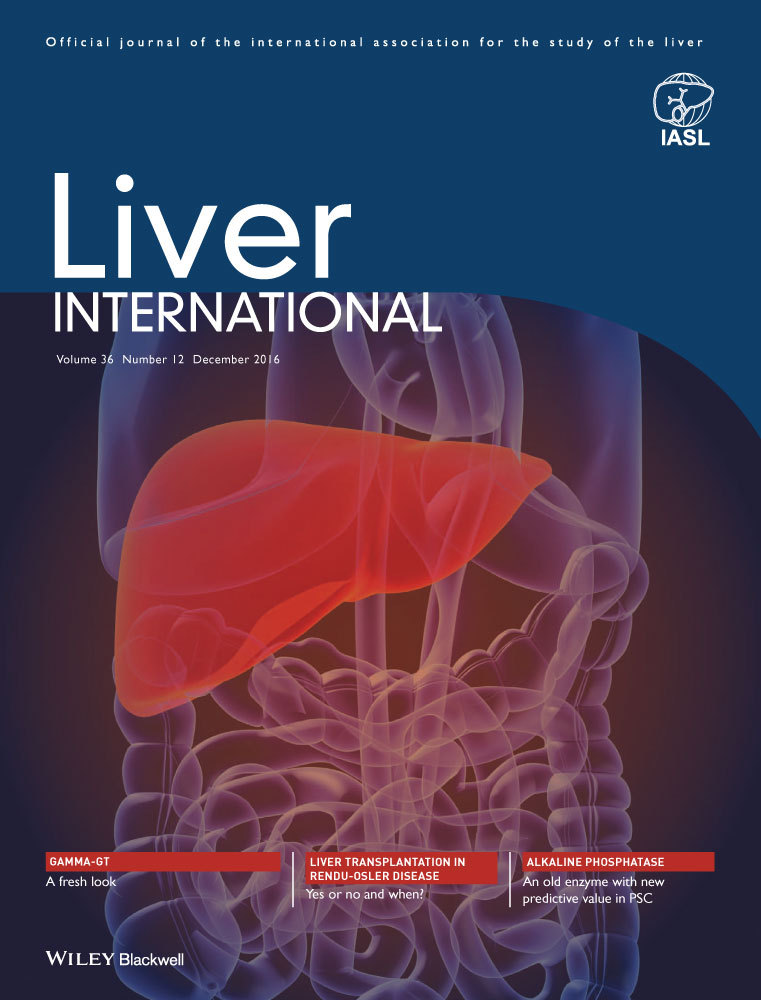Hereditary haemorrhagic telangiectasia: to transplant or not to transplant – is there a right time for liver transplantation?
Abstract
Background & Aims
Hereditary haemorrhagic telangiectasia is characterized by arterio-venous malformations (AVM). It frequently involves the liver without clinical symptoms, but may lead to biliary ischaemia, portal hypertension, or fatal high-output heart failure. The indication of liver transplantation is controversial.
Methods
Herein, we report the case of a 65-year-old female patient with a ‘double Osler syndrome’ consisting of hereditary haemorrhagic telangiectasia (HHT) and type I hereditary angioedema diagnosed at the age of 25 and 22 years respectively.
Results
Hereditary angioedema was treated with danazol for several decades until multiple hypoechogenic liver masses were detected. Albeit danazol treatment was replaced by C1 esterase inhibitor infusions, hepatocellular carcinoma was diagnosed at the age of 64 and the patient was listed for liver transplantation. HHT was marked by recurrent epistaxis until the age of 63 when severe intestinal bleeding occurred. At the age of 65, severe dyspnoea (NYHA class IV) developed and rapidly progressive high-output cardiac failure was diagnosed. Despite argon plasma coagulation to control bleeding from intestinal angiodysplasia, and treatment with bevacizumab to inhibit angiogenesis, the patient died from severe gastrointestinal bleeding associated with cardiogenic shock at the age of 66 before being transplanted.
Conclusion
The indication to list this patient for liver transplantation was debated several times before the diagnosis of hepatocellular carcinoma because of good general condition and low MELD score. Precise guidelines for screening and management of patients with hepatic HHT need to be better defined.




